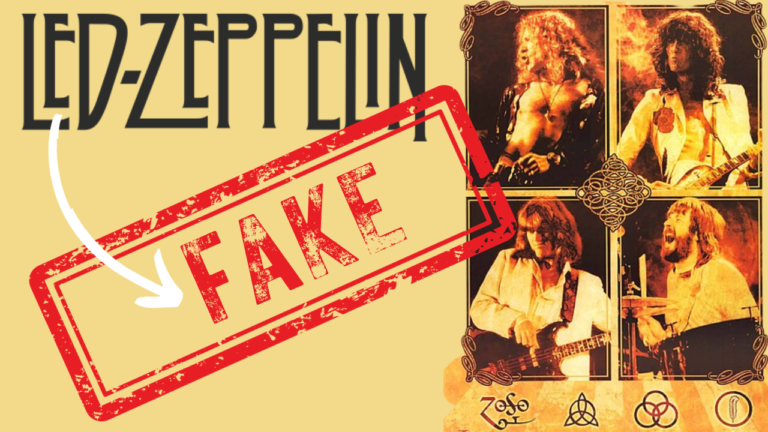Everything You Need To Play F Major Guitar Scale
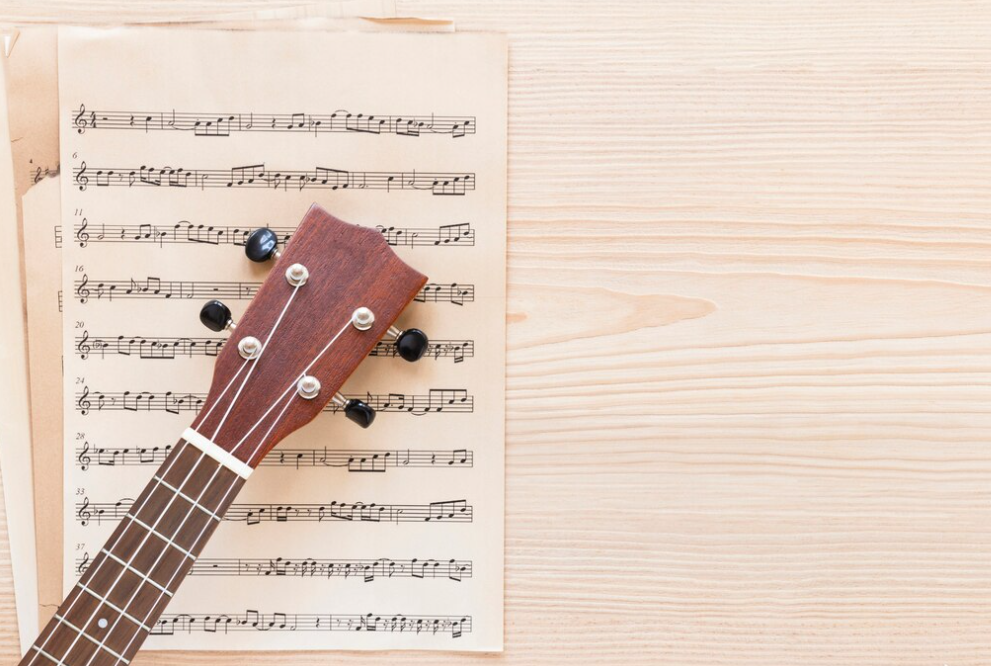
Learning the F Major scale on the guitar is essential for a well-rounded musician. This scale serves as a foundational element in music theory, aiding in understanding intervals, chord construction, and key signatures. The F Major scale is valuable for identifying notes in the key of F major and constructing related chords. It opens up opportunities for creating melodic and soloing expressions, especially within the key of F major, and enhances your ability to transpose to different keys using similar patterns.
Additionally, practicing the F Major scale contributes to ear training, helping with interval recognition and playing by ear. Mastering major scales, including F Major, boosts overall versatility and expands your repertoire, as many songs, especially in the key of F major, are based on this fundamental scale. Incorporating the F Major scale into your practice routine is crucial in becoming a proficient guitarist and musician.
The key signature of F major has one flat (Bb) and no sharps. Its parallel minor key is D minor while its parallel minor is F minor.
Notes In The F Major Scale
The F major scale is built up of the following 7 notes:
F G A Bb C D E
And this is how it looks on a diagram:

To play the F major scale you just need to apply the following whole and half steps to the fretboard: F major scale = F (W) G (W) A (H) Bb (W) C (W) D (W) E (H) F
F Major Scale Fretboard Positions
All positions of the F major scale can be played across the neck in standard tuning.
The CAGED Scale System, 3-notes-per-string System, and 7 Position Scale System are three popular methods for organizing these scale patterns on the guitar. While the CAGED system, based on chord shapes like C major, A major, G major, E major, and D major, provides a visual link between chords and scale patterns, the 3-Notes-Per-String and 7 Position Scale systems are favored for their efficient patterns.
Despite differing opinions among guitar players, the CAGED system stands out as a personal favorite, offering a practical approach to visualizing chord shapes alongside scale patterns. This system becomes particularly beneficial when exploring a new key, like F major, providing pathways for improvisation over chords. By mastering the CAGED system, you gain a versatile understanding that extends beyond F major, enabling you to tackle various other scales and facilitating quicker learning of solos from your favorite artists and lead players.
Position 1: CAGED “E” Shape

In the key of F major, starting with the “E shape” in the CAGED system is recommended due to the fretboard layout. This shape is located on the first fret (not the open fret) and repeats at the 13th fret. Even if some scale patterns may display notes that don’t initially appear to start with the root note, it’s acceptable as the goal is to visualize all scale tones and chord tones. It’s crucial to remember to play from the lowest root note on the 1st fret of the low E string to the highest one on the high E string or 1st string. Once you reach the highest root note, you’ll then reverse the direction. If the lowest note is not the root note, you can still go to that note instead.
Position 2: CAGED “D” Shape

In the next position of the F major scale, the chord layout resembles the “D chord shape.” To locate the root note, find the F note on the D string, resulting in a XXX565 figure, akin to the XXX232 D chord shape. The scale pattern closely aligns with the D chord shape, and playing the notes as indicated follows the same process as before. Start from the lowest root note, ascend to the highest playable note—either the 5th or 6th fret on the 1st string—and then descend back to the starting point. The concluding note in this pattern is the 3rd fret of the low E string.
Position 3: CAGED “C” Shape

The current position in the exploration of the F major scale is the C shape, situated around the 8th fret. Root notes are identified at the 8th fret of the A string and the 6th fret of the B string. The reason for reaching the C shape at this point is due to the arrangement of F notes across the fretboard, altering the sequence of the CAGED shapes. The E shape starts at the 1st fret and reaches the C shape at the 8th fret. Scale patterns follow a different order based on the lowest root note, making position 1 align with the E shape’s start at the 1st fret. This C shape is particularly advantageous for beginners as it comfortably fits the fretting hand, utilizing the pinky for notes on the 8th fret and the index finger for those on the 5th fret.
Position 4: CAGED “A” Shape

The A-shape pattern of the F major scale poses a challenge due to its wide span of notes, albeit being somewhat easier than playing the actual A chord pattern in the open position. Players often approach this shape differently, with variations in finger positions and occasional omission of the bottommost note on the low E string. Like other scale patterns, starting from the lowest root note and proceeding from there is recommended. It’s crucial to play the pattern slowly initially for accuracy before attempting to increase speed. Notably, when dealing with significant stretches, it’s important to focus on lifting one finger off the fretboard correctly before pressing another, as this contributes to better fret hand control, even though nuances may exist in this technique.
Position 5: CAGED “G” Shape

The final position in the CAGED system for the F major scale is the G chord shape. Similar to the E shape, this pattern contains three root notes. In initial improvisation, focusing on the root note is crucial, and having this pattern mastered proves useful in situations where the root note is sufficient. The abundance of root notes simplifies the thought process, facilitating the building of patterns learned earlier and aiding in overall proficiency.
Chords In The F Major Scale
F Major Chord
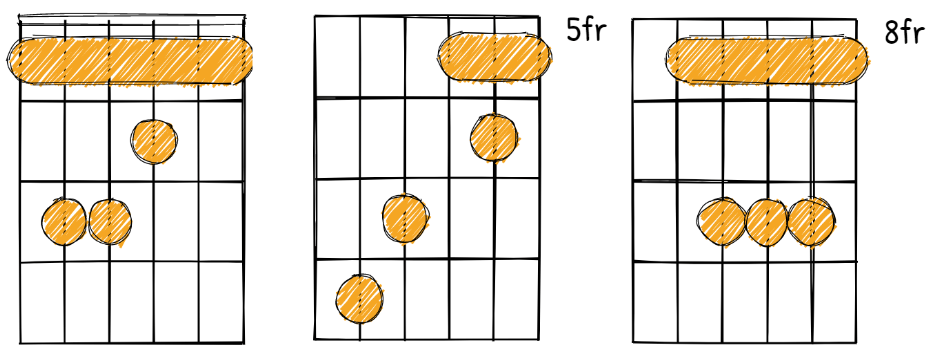
Displayed here are the prominent F major chord shapes spanning the neck, with the first chord recognizable as the frequently used barre chord shape in guitar music. It’s essential to note that these chord shapes are not arbitrary; they derive from the scale formula covered in this article. Examining the CAGED patterns from the previous section reveals the overlap between these chord shapes and the scale patterns. Recognizing these connections is crucial for unlocking the mysteries of the fretboard, though not everyone may grasp it immediately. The awareness of where chords and scales intersect brings one closer to understanding the fretboard more comprehensively.
G Minor Chord

Now, let’s explore chords beyond those associated with F major. Specifically, let’s delve into the chord shapes for the ii chords of F major, which is Gm. While the simple minor chord shape at the 3rd fret may be familiar, it’s crucial not to overlook the other shapes, as they play a key role in expanding your understanding of various minor chords. Practicing and becoming proficient with these chord shapes offer greater freedom to navigate the fretboard effortlessly. If you’re seeking more than just playing barre chords, this presents an opportunity to enhance your versatility on the guitar.
Am Minor Chord

The chord shapes presented here are identical to those introduced in the previous section, with the only distinction being that they are played with the root note of A instead of G. This repetition emphasizes the significance of learning shapes and patterns initially, highlighting their versatility across different root notes. Recognizing the frequent recurrence of certain shapes on the fretboard may lead to the realization that attempting to apply specific numbers of half and whole steps to create intervals and scales can be less practical and more complex than understanding and utilizing these recurring shapes and patterns.
Bb Major Chord

By this point, you should be familiar with several of these shapes. While the G or C shapes may not be as commonly used as the A or E shapes, they can become valuable at a more advanced level of guitar playing. For beginners, it might be advisable to focus on the A and E shapes initially, as they are more accommodating to the fretting hand and are generally easier to transition between chords.
C Major Chord
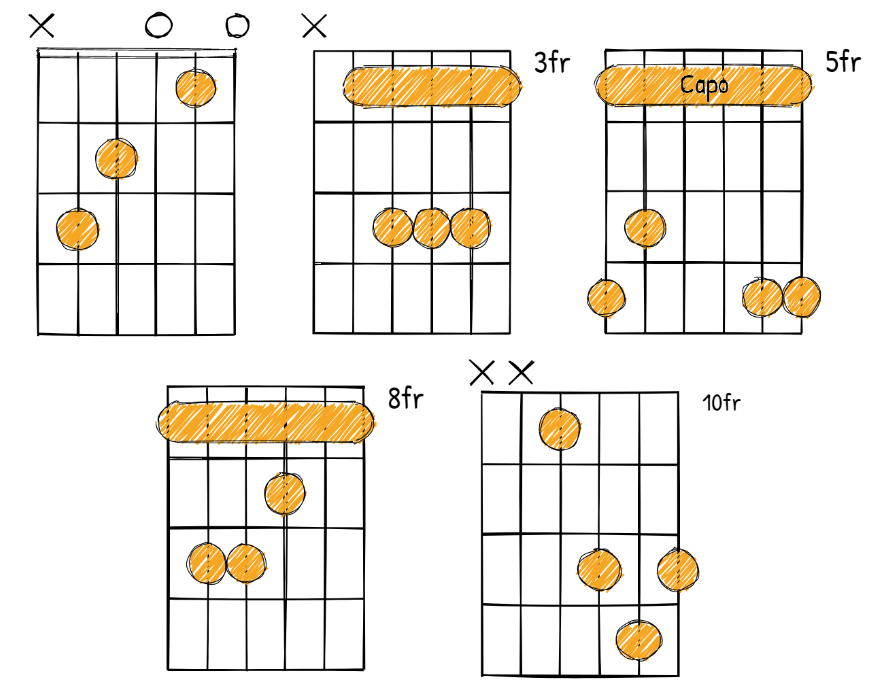
The final major chord in F major is the V chord of C major. Several of these shapes should be recognizable, emphasizing the frequent recurrence of these patterns on the guitar. These shapes, previously used to produce the sound of F major and Bb major, continue to be prevalent when exploring other key signatures, underscoring their versatility and consistent application across various musical contexts.
D Minor Chord
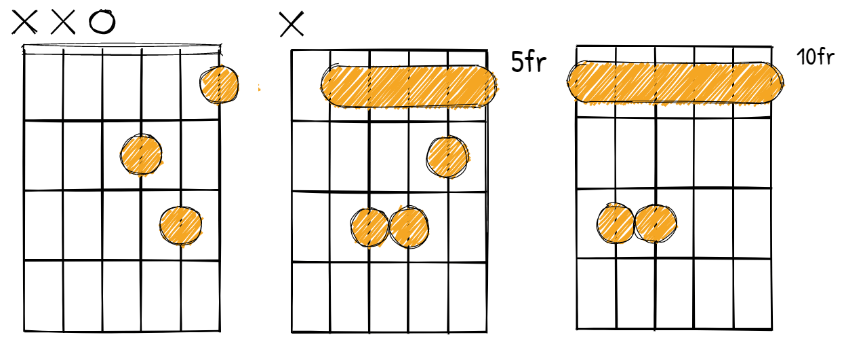
The chord shapes presented here serve as the foundation for creating the melancholic sound associated with the key of Dm, the relative minor of F major. Drawing inspiration from the movie Spinal Tap and the scene where Nigel discusses the sadness of the key of Dm, these shapes are reminiscent of the “Lick My Love Pump” sound. Having learned the CAGED patterns and other shapes applicable to Dm, you now have the freedom to compose your own tribute or variation of the song.
E Diminished Chord

Now, let’s explore the least used chord in F major, and generally in all major keys, which is the diminished chord at vii. These shapes present a challenge as they require the use of your pinky at certain points and involve barring the frets with your 2nd finger instead of your 1st. The diminished shape is not as easily incorporated into chord progressions compared to the other six chords. Despite the difficulty, it’s recommended to learn a few of these shapes and attempt to play them. It’s crucial to pay attention to which strings to leave out and deaden to avoid playing notes that don’t belong to the chord.
As you see, learning the F Major scale on the guitar is fundamental for a musician, serving as a foundational element in music theory, chord construction, and key signatures. The F Major scale offers opportunities for creating melodies and solos, especially within the key of F major, and enhances transposition skills. The chords associated with F major, including major, minor, and diminished chords, are important for expanding your musical repertoire and understanding the fretboard.
Author: Daniel Powers Jr, the founder of Real Brave™, serves as the chief inspiration to thousands of students in the Real Brave music instruction program. He’s also the visionary behind PracticePad™, an online platform for live one-on-one online music lessons, lesson tracking, and scheduling. Beyond his entrepreneurial pursuits, Daniel leads a non-profit organization that provides formerly homeless children with access to music education, making a profound impact on their lives. His unwavering dedication to music, innovation, and education continues to inspire individuals to reach their fullest potential while creating positive change in communities. Follow Real Brave on all the socials:
youtube.com/@realbraveinc
twitter.com/realbraveinc
https://www.tiktok.com/@realbraveinc
instagram.com/realbraveaudio
facebook.com/realbraveinc



